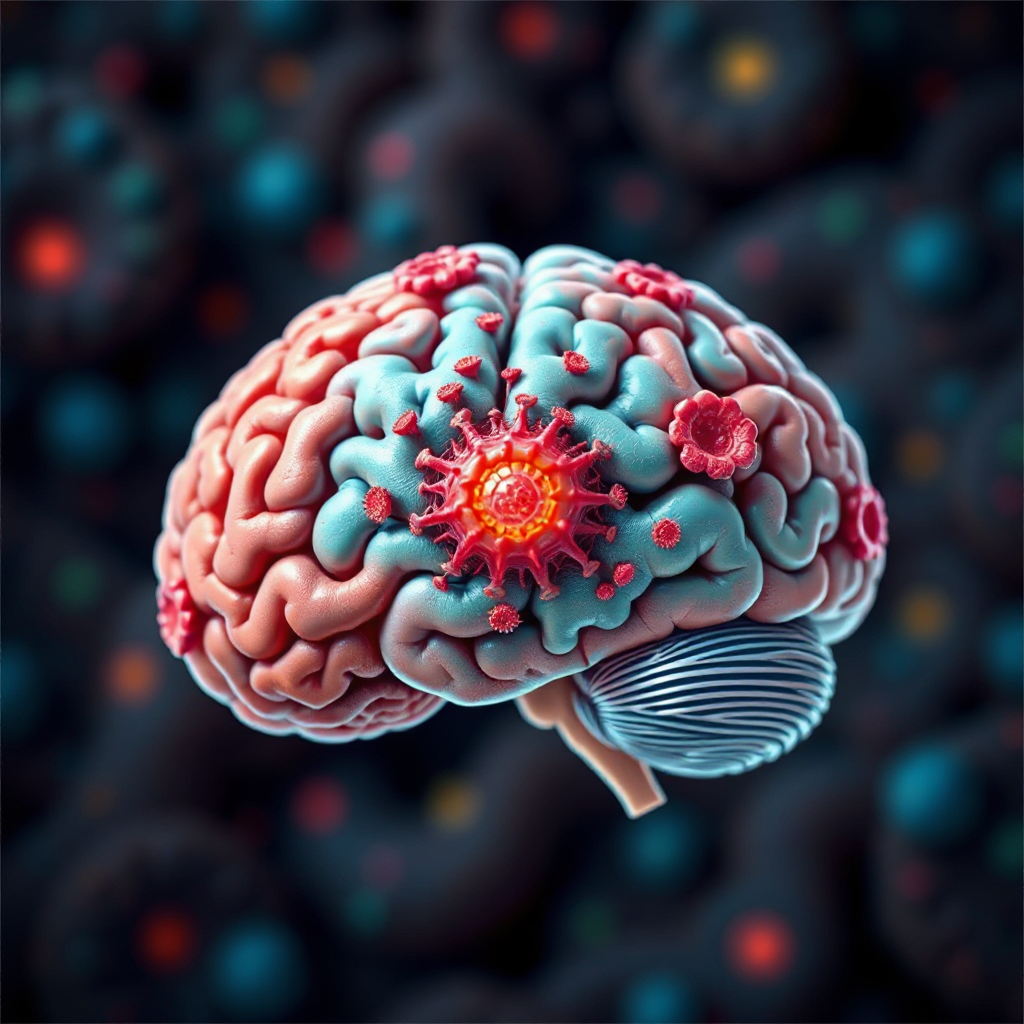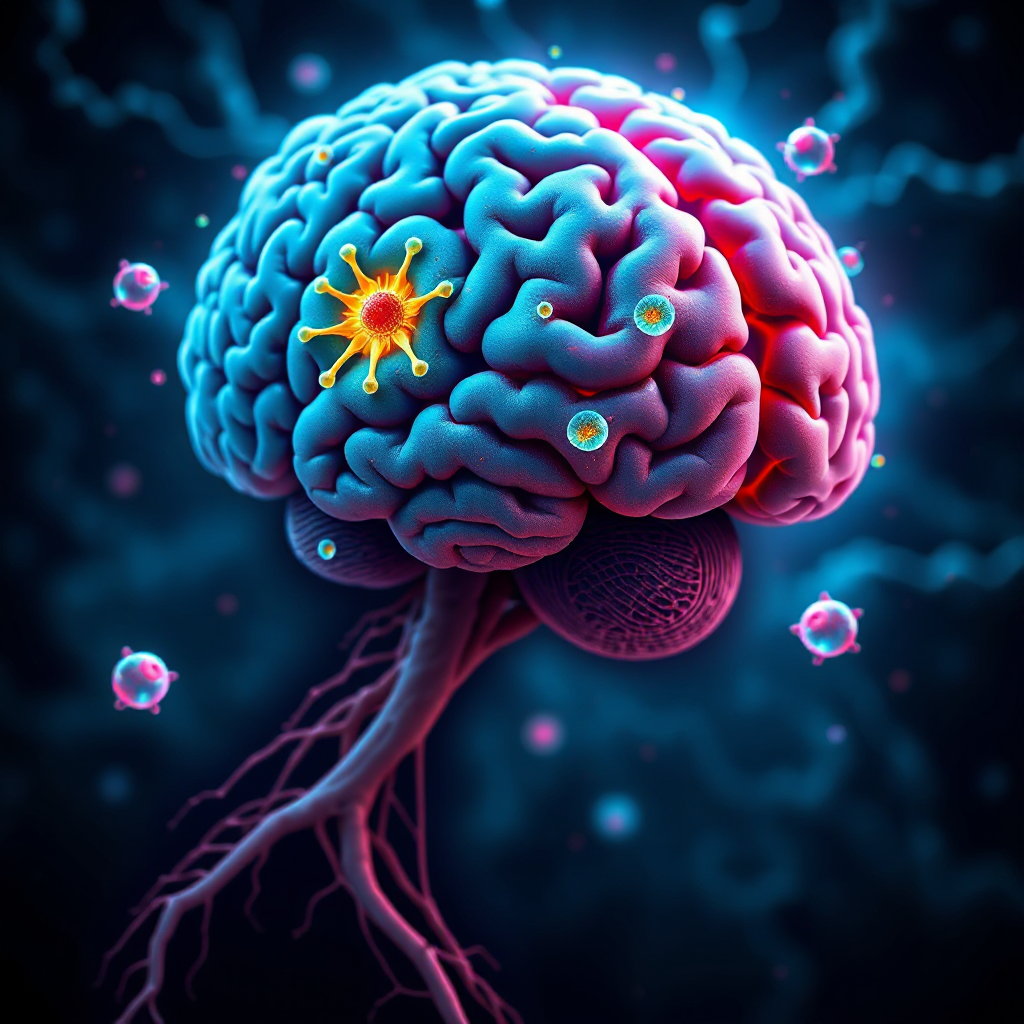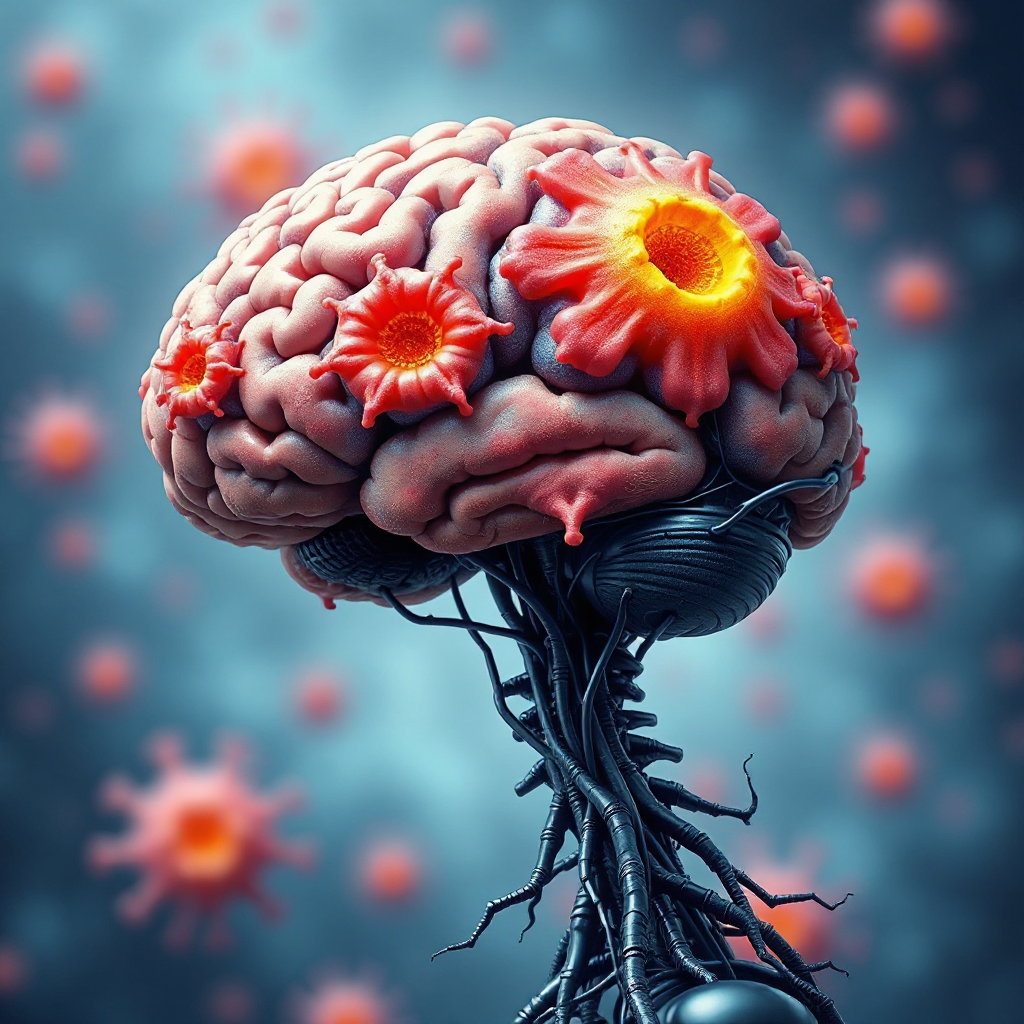What is Pineal Astrocytoma and How Does It Develop

Pineal astrocytoma is a rare type of brain tumor that forms in the pineal gland, a small structure deep within your brain. This gland plays a key role in regulating sleep-wake cycles by producing melatonin. When a tumor develops here, it can disrupt critical neurological functions. You might experience symptoms like headaches, double vision, or trouble sleeping. In some cases, the tumor causes hydrocephalus, a buildup of cerebrospinal fluid that increases pressure in your brain. Other effects include poor balance, nausea, or even seizures. Its location makes early detection and treatment essential to prevent severe complications.
Key Takeaways
Pineal astrocytoma is a rare brain tumor. It grows in the pineal gland, which controls sleep and wake cycles. This tumor can cause headaches and vision problems.
Finding it early is very important for treatment. Symptoms like nausea, double vision, and trouble balancing should be checked by a doctor quickly.
Treatments include surgery, radiation, and chemotherapy. These aim to remove or shrink the tumor while protecting the brain.
Knowing risks, like genetic changes or past radiation exposure, can help you notice warning signs early.
New treatments, like immunotherapy and targeted medicine, may help patients recover better from pineal astrocytoma.
What is Pineal Astrocytoma?

Definition and Origin
Pineal astrocytoma is a rare brain tumor that originates in the pineal gland, a small structure located deep in your brain. This gland plays a vital role in regulating your sleep-wake cycle by producing melatonin. Unlike other astrocytomas, pineal astrocytomas are typically classified as low-grade tumors, meaning they grow slowly and are less aggressive. However, their location in the pineal region can lead to significant neurological challenges, making early detection crucial.
Classification of Pineal Astrocytomas
Low-grade vs. High-grade Astrocytomas
Pineal astrocytomas are categorized based on their growth rate and aggressiveness. Low-grade astrocytomas, such as pineocytomas, grow slowly and often have a better prognosis. High-grade astrocytomas, on the other hand, are more aggressive and can spread to nearby tissues. Understanding the grade of the tumor helps doctors determine the most effective treatment plan.
Differences from Other Pineal Region Tumors
The pineal region can host various types of tumors, each with unique characteristics. Pineal astrocytomas differ from other tumors in this area, such as germ cell tumors or pineoblastomas, in their origin and behavior. For example, while pineoblastomas are highly aggressive and fast-growing, pineal astrocytomas are generally slower to develop. This distinction is essential for accurate diagnosis and treatment.
WHO Grade | Key Features | |
|---|---|---|
Pineocytoma | I | Predominant lobular architecture, minimal nuclear variation, MIB1 LI ≤2% |
PPTID | II | Presence of atypical features, mitotic count ≤5/10 hpf, MIB1 LI 3%-10% |
PPTID | III | Mitotic count >5/10 hpf and/or MIB1 LI >10%, may include mixed tumors |
PB | IV | Diffuse primitive embryonal morphology, frequent mitoses, necrosis |
PTPR | II | Predominantly papillary, mitotic count ≤5/10 hpf, MIB1 LI ≤10% |
PTPR | III | Similar to PTPR II but with necrosis, MVP, nuclear atypia, mitotic count >5/10 hpf |
Prevalence and Risk Factors
Pineal astrocytomas are extremely rare, accounting for a small percentage of brain tumors. Certain factors may increase your risk of developing this condition. Genetic mutations and inherited syndromes, such as neurofibromatosis type 1 (NF1) and Li-Fraumeni syndrome, are known contributors. Previous exposure to radiation, especially during childhood, also raises the likelihood of developing these tumors. While these risk factors are not always present, understanding them can help you stay informed about potential warning signs.
Risk Factor | Description |
|---|---|
Genetic Mutations | Certain genetic mutations may increase the risk of developing pineal astrocytomas. |
Genetic Syndromes | Conditions like neurofibromatosis type 1 (NF1) and tuberous sclerosis complex (TSC) are linked to higher risk. |
Radiation Exposure | Previous radiation treatment to the head, especially in children, is associated with increased risk. |
Inherited Genetic Syndromes | Syndromes such as Li-Fraumeni syndrome and NF1 can elevate the risk of brain tumors. |
How Does Pineal Astrocytoma Develop?
Role of Astrocytes in Tumor Formation
Astrocytes, a type of glial cell, play a critical role in maintaining your brain's health. These cells support neurons by providing nutrients, regulating blood flow, and maintaining the blood-brain barrier. However, when astrocytes undergo abnormal changes, they can start dividing uncontrollably. This uncontrolled growth leads to the formation of tumors like pineal astrocytoma. In the pineal gland, these tumors disrupt normal functions, affecting your sleep-wake cycle and other neurological processes.
Genetic and Molecular Mechanisms
Genetic mutations often drive the development of pineal astrocytomas. Certain inherited conditions increase your risk. For example:
Neurofibromatosis type 1 (NF1) can cause abnormal cell growth in the brain.
Tuberous sclerosis complex (TSC) leads to the formation of benign tumors in various organs, including the brain.
Li-Fraumeni syndrome, a rare genetic disorder, predisposes you to multiple types of cancer, including brain tumors.
These mutations alter the molecular pathways that control cell division and growth. When these pathways malfunction, astrocytes in the pineal gland can transform into tumor cells. Understanding these mechanisms helps researchers develop targeted therapies to treat this condition.
Growth Patterns and Impact on Surrounding Structures
Pineal astrocytomas grow within the confined space of your brain. As they expand, they can compress nearby structures, such as the cerebral aqueduct. This compression often leads to hydrocephalus, a condition where cerebrospinal fluid builds up, increasing pressure inside your skull. You might experience symptoms like headaches, nausea, or vision problems. The tumor's location also makes surgical removal challenging, as it sits near critical brain regions. Early detection is essential to minimize its impact on your neurological health.
Symptoms and Diagnosis

Common Symptoms
Pineal astrocytoma can cause a range of symptoms due to its location in the brain. These symptoms often result from the tumor pressing on nearby structures or increasing intracranial pressure. You might notice the following:
Visual disturbances: Double vision or blurry vision may occur if the tumor compresses the optic nerve.
Difficulty with balance and coordination: The tumor can affect the cerebellum, leading to instability or trouble walking.
Nausea and vomiting: Increased pressure inside your skull often triggers these symptoms.
Changes in behavior or personality: If the tumor impacts the frontal lobes, you might experience cognitive or emotional changes.
Seizures: These can sometimes be the first sign of a tumor in the pineal region.
Recognizing these symptoms early is crucial. They often overlap with other neurological conditions, so consulting a healthcare professional is essential for an accurate diagnosis.
Diagnostic Techniques
Imaging Studies (MRI, CT scans)
Doctors rely on advanced imaging techniques to identify pineal astrocytomas. These tools provide detailed views of the brain and help differentiate this tumor from others in the pineal region.
Imaging Technique | Description |
|---|---|
The gold standard for diagnosing pineal tumors. It offers detailed images without radiation exposure. | |
CT Scan | Useful for detecting calcifications in the pineal gland. Often used alongside MRI for a comprehensive evaluation. |
PET | Assesses the tumor's metabolic activity, which can indicate its aggressiveness. |
MRS | Analyzes the tumor's chemical composition, helping to distinguish it from other brain lesions. |
MRI is typically the first choice due to its precision and safety. However, combining multiple imaging methods can provide a more complete picture of the tumor's characteristics.
Biopsy and Histological Analysis
In some cases, imaging alone may not provide enough information. A biopsy becomes necessary to confirm the diagnosis. During this procedure, a small sample of the tumor is removed and analyzed under a microscope.
Intraoperative frozen section diagnosis ensures accurate identification of the tumor during surgery.
Postoperative pathological analysis is critical for determining the tumor type and guiding treatment.
These steps are vital because tumors in the pineal region often share overlapping features. A precise diagnosis allows doctors to tailor the best treatment plan for you.
Treatment Options
Surgical Interventions
Surgery is often the first step in treating pineal astrocytoma. It aims to remove as much of the tumor as possible while preserving surrounding brain structures. Several surgical techniques are available, each tailored to the tumor's location and size:
Craniotomy: This common procedure involves opening the skull to access and remove the tumor.
Awake craniotomy: Surgeons may keep you awake during the operation to monitor brain function in real time.
Minimally invasive techniques: These include endoscopic surgery and laser interstitial thermal therapy (LITT), which use smaller incisions and specialized tools.
Endoscopic third ventriculostomy (ETV): This procedure relieves hydrocephalus by creating a new pathway for cerebrospinal fluid to flow.
Infratentorial supracerebellar approach: This method uses a natural corridor to access tumors located below deep cerebral veins.
Challenges of Surgery in the Pineal Region
Surgery in the pineal region is complex and requires precision. The suboccipital transtentorial approach is often recommended for tumors that extend upward and displace critical veins. This technique involves carefully retracting the occipital lobe to reach the tumor while protecting vital blood vessels. However, these procedures can take several hours and carry risks, including damage to nearby brain structures. You may also need additional treatments, such as chemotherapy or radiation, after surgery.
Radiation Therapy
Radiation therapy is another effective treatment option, especially for certain types of pineal tumors. It uses high-energy beams to target and destroy cancer cells. For pineal astrocytomas, radiation therapy often complements surgery to eliminate any remaining tumor cells. While this approach can be successful, it may cause side effects like fatigue, headaches, and hair loss. In children, more serious effects, such as cognitive changes and growth issues, can occur. Combining radiation with other treatments often improves outcomes.
Chemotherapy
Chemotherapy uses drugs to kill cancer cells or stop them from growing. For pineal astrocytomas, doctors often use a combination of agents to enhance effectiveness. Commonly used drugs include:
Chemotherapy Agents | Description |
|---|---|
Alkylating agents | Commonly used in various protocols |
Platinum agents | Often included in treatment regimens |
Vincristine (VCR) | Part of combination therapies |
Etoposide | Frequently used in treatment plans |
Cytarabine | Used in combination with other agents |
These drugs are typically administered in cycles to allow your body to recover between treatments. While chemotherapy can be effective, it may cause side effects like nausea, fatigue, and a weakened immune system. Your doctor will tailor the treatment plan to minimize these effects and maximize results.
Emerging Treatments and Clinical Trials
Advancements in medical research have opened new doors for treating pineal astrocytomas. Emerging therapies and clinical trials focus on improving outcomes while minimizing side effects. These innovative approaches aim to provide you with more effective and personalized treatment options.
Immunotherapy: Harnessing Your Immune System
Immunotherapy is a promising area of research. It works by boosting your immune system to recognize and attack tumor cells. Scientists are exploring treatments like checkpoint inhibitors and CAR-T cell therapy for brain tumors, including pineal astrocytomas. These therapies show potential in targeting cancer cells without harming healthy tissue.
Targeted Therapy: Precision Medicine
Targeted therapies use drugs designed to attack specific genetic mutations or proteins in tumor cells. For example, inhibitors targeting the MAPK or PI3K pathways, which are often altered in astrocytomas, are under investigation. These treatments could offer you a more precise approach, reducing the risk of damage to surrounding brain structures.
Note: Targeted therapies are still in experimental stages for pineal astrocytomas, but early results are encouraging.
Ongoing Clinical Trials
Clinical trials play a vital role in testing new treatments. You can participate in trials that evaluate novel drugs, radiation techniques, or combination therapies. These studies not only provide access to cutting-edge treatments but also contribute to advancing medical knowledge.
Trial Type | Focus Area | Potential Benefits |
|---|---|---|
Immunotherapy Trials | Boosting immune response | Reduced tumor growth |
Drug Trials | Testing targeted therapies | Personalized treatment options |
Radiation Trials | Refining radiation delivery methods | Fewer side effects, improved accuracy |
Exploring these emerging treatments gives you hope for better outcomes. If you're considering clinical trials, consult your doctor to determine the best options for your condition.
Prognosis and Outcomes
Factors Influencing Prognosis
Tumor Grade and Size
The prognosis for pineal astrocytoma depends on several factors. Tumor grade plays a significant role, as low-grade tumors tend to grow slowly and respond better to treatment. High-grade tumors, however, are more aggressive and often lead to poorer outcomes. Tumor size and location also influence prognosis. Larger tumors or those compressing critical brain structures can complicate treatment and recovery.
Other factors include:
The type and stage of the tumor.
The extent of surgical removal.
The use of additional treatments like radiation or chemotherapy.
Patient Age and Overall Health
Your age and overall health significantly impact your prognosis. Younger patients with no underlying health conditions often recover better. Older individuals or those with pre-existing conditions may face more challenges during treatment. Maintaining good physical health before and during treatment can improve your ability to tolerate therapies and recover effectively.
Long-term Outcomes and Quality of Life
Long-term outcomes for pineal astrocytoma vary based on tumor type and treatment success. The table below highlights survival rates and follow-up durations for different tumor types:
Tumor Type | Follow-Up (months) | |
|---|---|---|
Low-grade gliomas (WHO I & II) | 46 | 12.5 ± 11 |
High-grade gliomas (WHO III & IV) | 16 | 36 ± 23 |
Diffuse grade II astrocytomas (pineal region) | Dismal (1 and 12 months post-surgery) | N/A |
Nondiffuse grade I-II gliomas | 92 | 20 |
Diffuse grade II-IV gliomas | 0 | 20 |
Patients with low-grade tumors often experience better long-term outcomes. However, high-grade tumors can lead to significant challenges, including reduced survival rates and a lower quality of life. Regular follow-ups and rehabilitation programs can help improve outcomes and support recovery.
Importance of Early Diagnosis and Treatment
Early diagnosis plays a crucial role in managing pineal astrocytoma. Detecting the tumor early allows doctors to intervene promptly, reducing the risk of complications. Timely treatment can alleviate symptoms like headaches and vision problems, improving your daily life. Regular monitoring ensures that any changes in your condition are addressed quickly. This proactive approach not only enhances your physical health but also reduces anxiety, helping you maintain a better quality of life.
Pineal astrocytoma is a rare brain tumor that can disrupt critical neurological functions. Understanding its development, symptoms, and treatment options empowers you to take proactive steps toward managing your health. Early diagnosis plays a vital role in improving outcomes, especially with advancements in imaging and therapies.
Why consult a medical professional?
Specialists in neuro-oncology provide personalized care for pineal tumors.
Accurate imaging techniques like MRI ensure precise diagnosis.
Symptoms such as headaches or vision problems require expert evaluation.
If you notice concerning symptoms, seek professional advice promptly to safeguard your well-being.
FAQ
What makes pineal astrocytoma different from other brain tumors?
Pineal astrocytoma develops in the pineal gland, a small structure deep in your brain. Its location makes it unique compared to other brain tumors. It often disrupts sleep-wake cycles and can cause hydrocephalus by blocking cerebrospinal fluid flow. Early detection is crucial due to its impact on neurological functions.
Can pineal astrocytoma be cured?
Treatment success depends on the tumor's grade and size. Low-grade tumors often respond well to surgery and radiation. High-grade tumors may require additional therapies like chemotherapy. While some cases achieve remission, regular follow-ups are essential to monitor for recurrence and manage long-term effects.
Are children more likely to develop pineal astrocytoma?
Pineal astrocytomas can occur at any age, but they are more common in children and young adults. Genetic factors, such as inherited syndromes like neurofibromatosis type 1, increase the risk. If you notice symptoms like headaches or vision problems in children, consult a doctor immediately.
How can I recognize the symptoms of pineal astrocytoma?
Common symptoms include persistent headaches, double vision, nausea, and difficulty with balance. These occur because the tumor compresses nearby brain structures or increases intracranial pressure. If you experience these symptoms, seek medical advice for proper evaluation and diagnosis.
Is surgery the only treatment option for pineal astrocytoma?
Surgery is often the first step, but it’s not the only option. Radiation therapy and chemotherapy can complement surgery, especially for high-grade tumors. Emerging treatments like immunotherapy and targeted therapy are also being explored in clinical trials to improve outcomes.
Tip: Discuss all available treatment options with your doctor to choose the best plan for your condition.
See Also
Cerebral Astrocytoma: Understanding Its Impact on Brain Function
Cerebellar Astrocytoma: Key Symptoms and Their Implications
Exploring Astrocytoma: Types and Their Distinct Features
